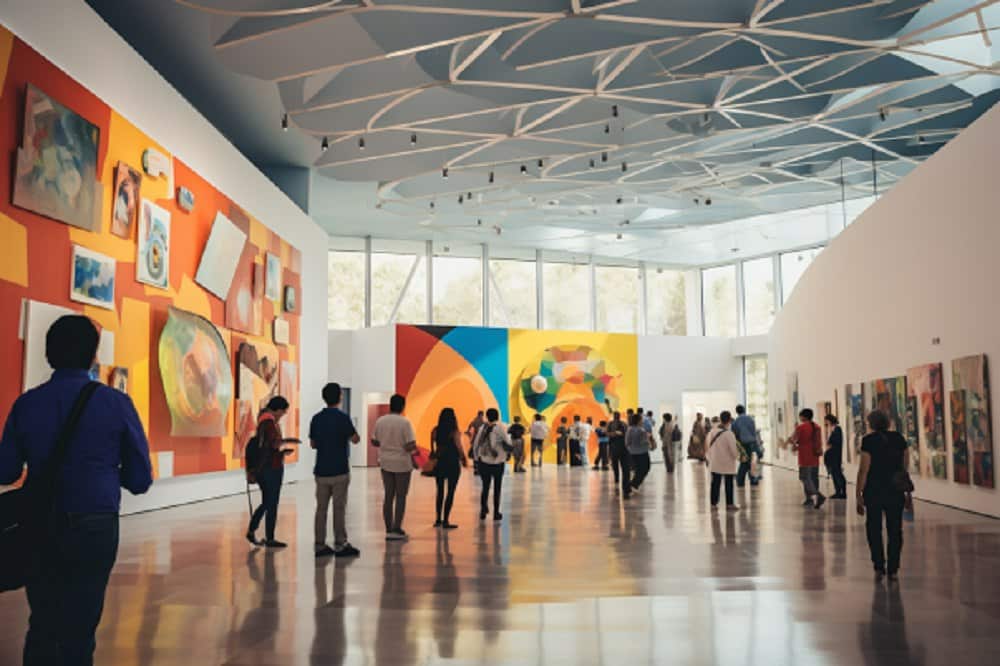Ramat Gan Museum
The Ramat Gan Museum is a testament to Israel’s artistic legacy. In this revered institution, the vibrant tapestry of Israeli creativity unfolds across the expanse of more than a century.
Recently, the museum unveiled a veritable treasure trove containing several contemporary works that pay homage to the luminaries of the local Artscape. Notable names in this category include Reuven Rubin, Joseph Zaritsky, Yitzhak Danziger, Yehezkel Streichman, Yigal Tomarkin, and Arie Aroch.
The collection generously provided by the Phoenix Insurance Group exudes an aura of comprehensiveness that embodies definiteness.
The Diverse Array of Artists And Their Works
“Be’eretz Ahavati” (In the Land of My Love), as the exhibition is aptly called, released its treasures to the public after a hiatus of 17 years, offering a rare and invaluable glimpse into a treasure trove of over 200 works. The roster of artistic titans encompasses the indomitable Moshe Kupferman, Micha Ullman, and Menashe Kadishman, with only the indefatigable 83-year-old Ullman still gracing the contemporary creative landscape.
Yet, the exhibition is not confined to fallen masters alone; it welcomes the emerging talents in the modern Israeli art scene.
Tsibi Geva, Sigalit Landau, Michal Rovner, and accomplished photographers David Adika, Adi Ness, and Sharon Yaari contributed their distinct works to earn their rightful place among the industry’s legends.
The Curatorial Process
For the curator, Roni Cohen-Binyamini, this monumental task of selecting and orchestrating this expansive exhibit was an artistic brilliance. However, the Phoenix vaults, containing many treasures, posed a formidable challenge.
Hence, works by luminaries like Dada pioneer Marcel Janco and multidisciplinary artist Mordechai Ardon did not find a niche in the current display despite their brilliance. Meanwhile, Cohen-Binyamini’s curation is a testament to her discerning eye, a labor of love culled from a collection initiated by Yosef Hachami, Phoenix’s owner and CEO until 2002.
The Impact And Significance Of The Exhibition
Cohen-Binyamini embarked on the task with a keen eye for the collective impact of the works, disregarding the temptation to single out individual pieces. She saw it imperative to democratize this rich tapestry of art, making it accessible to a broad audience and inviting viewers to rediscover Israeli art through a contemporary lens.
The “Be’eretz Ahavati” exhibition is not a dry, scholarly event. It will convey the essence of the local artistic spirit to offer a fresh perspective on what has emerged from this region over the years.
Accordingly, the aim was not merely to select and position artworks but to establish dialogues between them, bridging temporal and historical gaps. Ramat Gan Museum Director-General Ran Guetta shares this curatorial philosophy, recognizing the significance of presenting these pivotal works in the context of Israeli cultural evolution.
The exhibition has garnered immense interest, with over 12,000 eager visitors scheduled to attend. Mayor Carmel Shama Hacohen of Ramat Gan adds his voice to the chorus of praise, acknowledging the exhibition’s potential to unify and uplift in these trying times.
“Be’eretz Ahavati” offers a unifying cultural experience displayed in a museum with substantial community investment. The exhibition organizers are eager to spread this positive impact, sharing the artistic treasures with a broader audience.
It is a testament to the enduring power of art to inspire, connect, and uplift communities, a beacon of creativity that resonates far beyond the museum’s walls. The exhibit celebrates the profound influence of Israeli art, both as a cultural cornerstone and an enduring source of inspiration for generations to come.
It pays tribute to the artists and forms a living narrative of the nation’s artistic journey. This legacy continues to shape and inspire the creative landscape of Israel.

